Amazon Studios’ LOTR Series Heads Into Uncharted Carnal Waters with Casting Call for Nudity and an “Intimacy Coordinator”
This might be a singularly surprising or even upsetting concept to present to Tolkien fans. If I were to address this reality to Star Wars, or Harry Potter, or even Miyazaki fandom it could raise eyebrows or outright alarm. But gather ’round the campfire and hear my tremulous words:
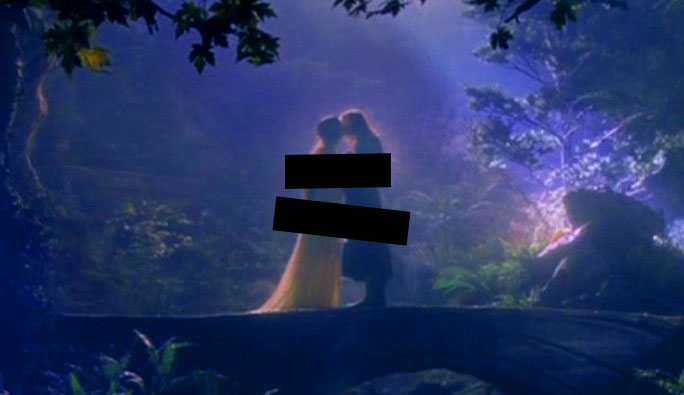
“Prepare for a newly-sexualized version of your favorite fantasy world.”
It’s the equivalent of saying: “Get ready to watch Anakin and Padme do something onscreen that will forever alter the way you see Star Wars. Sorry about the sand. It gets everywhere.”
Is this a real lightning rod issue? Depends on your temperament. I have to be really careful about presumed gatekeeping (which is not my intention) or any semblance of that; I just want this discussion WAY out in the open. Let’s get to the heart of this, because it is a thing now.
We must clearly ask ourselves what we want and don’t want from a billion-dollar Tolkien TV adaptation, because the tracks are laid and that train is headed straight for us, via your streaming device and paid subscription.
It is needful to discuss and understand those qualities of Tolkien’s work that are most important to us. Fair to say we have a worldwide multigenerational scholarly and fan community that share some great common denominators of what “fidelity” means in an adaptation of Tolkien. Thankfully we have shared voices; and if we shout from the rooftops collectively Amazon Studios might, perchance, just listen.
Let’s tell them what we expect. We are the audience they need to win over, after all.
T/W: By necessity, our topics today include sex organs, bodily functions, sexual abuse and rape in other fantasy TV shows, and coordinating intimacy—so here’s the trigger warning ahead of time. New territory for TheOneRing.net, BUT HEY IT’S 2020! Bear with me. We may find an egalitarian way forward in this conversation.
Amazon’s Approach: Will There Be Sex On Screen?
Fact check: We can confirm Amazon Studios has hired Jennifer Ward-Lealand, a well-known New Zealand Intimacy Coordinator, for the Lord of the Rings production.
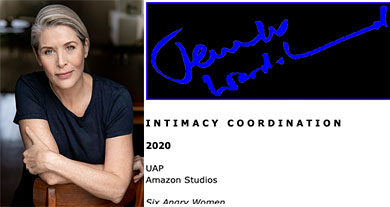
The only Amazon show in NZ is Lord of the Rings, a production so overwhelmingly large that Auckland film unions report that over 80% of all local production crew are working on it, leaving no crew for other TV shows. It should be known that instead of clearly stating to be on LOTR, Ms. Ward-Lealand’s official site declares the acronym for “Untitled Amazon Project” / UAP is listed on her upcoming projects, first reported on Knight Edge Media and other sites. We know for sure Amazon’s UAP is the catch-all working title for LOTR. Remember how “Jamboree” and “Little Rivers” were the working titles for Peter Jackson’s LOTR and Hobbit Trilogies, respectively. But how much nudity is Amazon considering?
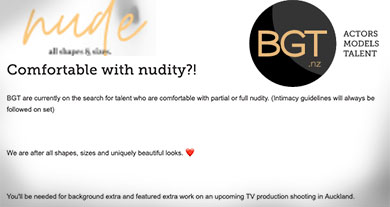
Will There Be Group Nudity?
Fact check: Rumor! An open casting call for background extras “comfortable with nudity” appeared. Just how many naked extras do you need for a classy, romantic love-making scene?
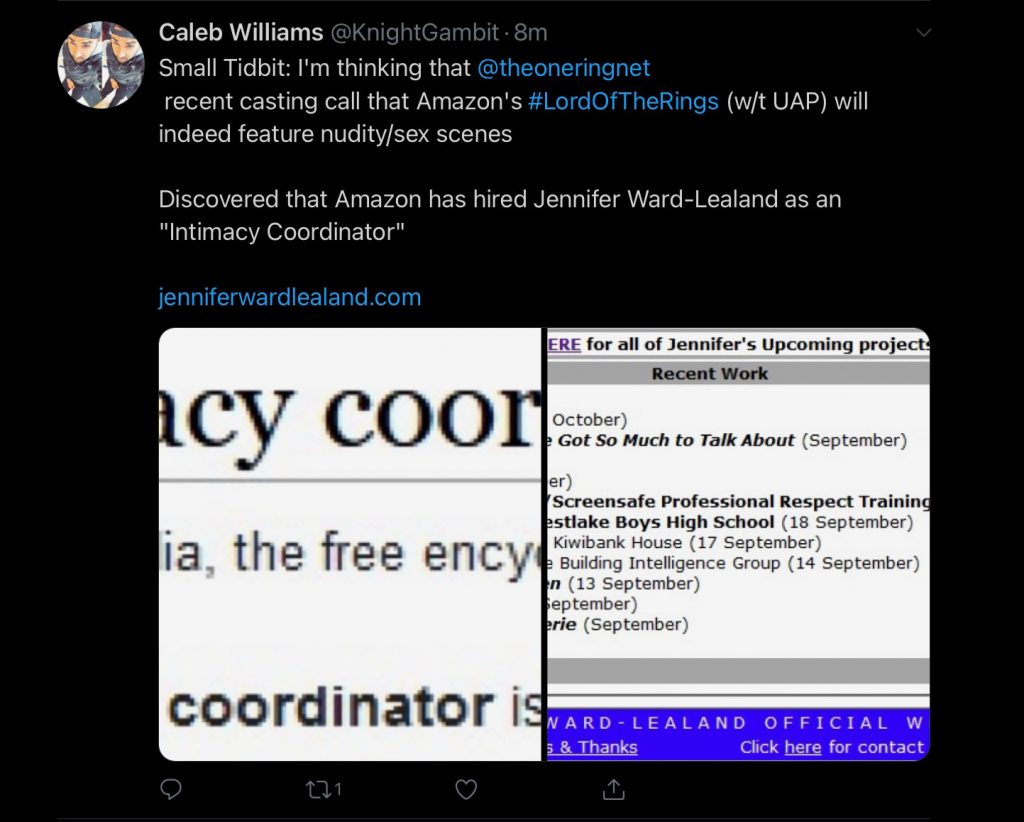
Caleb Williams dug deep while reflecting on some of our earlier reporting on TheOneRing.net of new casting announcements by BGT Casting; stating ‘must be comfortable with nudity’ for upcoming roles in LOTR. Put two and two together: there’s an Intimacy Coordinator who serves an important role to ensure the well-being of actors during sex scenes (or with nudity) and then we learn nudity in certain roles is openly asked for.
Will Characters Be ‘Sexified’ That Weren’t In Tolkien’s Books?
Fact Check: Unknown! The precise story they’re telling is unknown, as is the time within the 2nd Age wherein it’s all set. Don’t know what’s in the scripts, their content, nor what proper characters are associated with already-established cast members. We do know who plays a handful of the leads (Galadriel, Elrond) with best guesswork. We follow these actors on Instagram but we don’t know exactly who this ‘Tyra’ characters is because Tolkien never named one.
We surely don’t know who’s involved in scenes of nudity/sexuality. Debate is now open on where that would be necessary in a grand story of Númenor or the Elven-smiths of Eregion, or the welcoming halls of Khazad-dûm in its pre-Balrog glory.
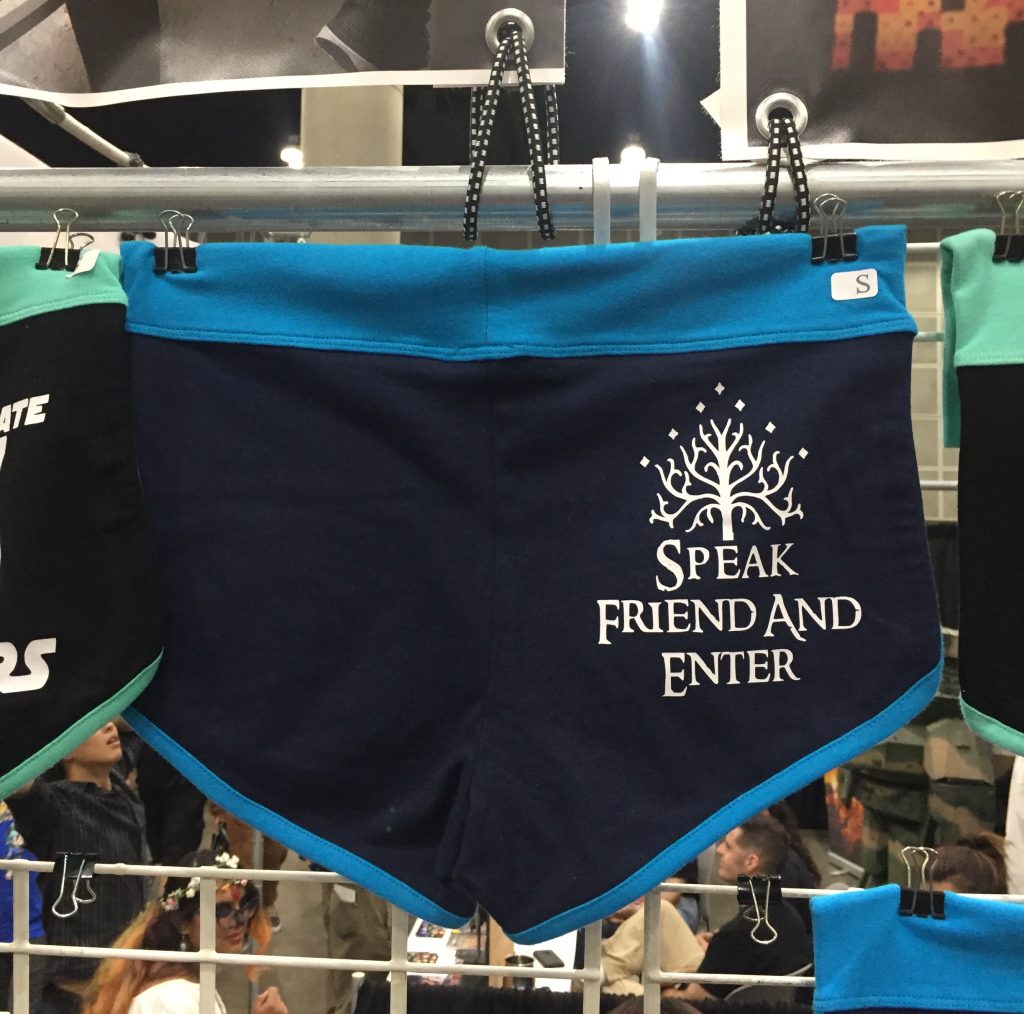
We do know they are using water tanks. A stunt performer was injured filming scenes underwater (and she has thankfully recovered). Possible connection to Númenor being flooded and ruined in a specific catastrophe? Yes, quite possible. Underwater scenes depicting naked people swimming? We just don’t know.
How Tolkien Presented Sexualized Content
He simply didn’t. Tolkien was super-duper Catholic. In his own words to his publisher he expressed the desire for his overall Legendarium to be presented as “‘high’, purged of the gross.” That’s from his famous Letter 131. I’ll get back to it in a bit. He did not write stories in the manner of George R.R. Martin, although the inverse is often true. The word ‘rape’ does not appear in The Hobbit, and only once in LOTR: The Return of the King (even then not referencing a person but a geographical place, Gondor: as in ‘sack’ or ‘pillage’).
There are a few notable instances of non-sexual nudity mentioned in The Lord of the Rings itself: (a) the hobbits’ bath in Crickhollow, (b) the running naked through the grass to clear their hearts and minds after imprisonment by the Barrow Wights, (c) Frodo’s rescue by Sam at the Tower of Cirith Ungol. Perhaps there’s one I missed.
A few stories from The Silmarillion include incredibly dark things like incest; as with Túrin and Niënor. But that wasn’t their fault (poor things) and Amazon Studios does not have the licensing for those particular stories.

That’s not what they’re currently producing.
Tolkien vs. Other Popular Fantasy
I’m more keen to look at Tolkien’s works the way the Professor himself looked at them. He was spiritually and mentally deliberate in everything he did. With his “Sub-Creation” Tolkien meant to celebrate God’s main Creation with such language and artistry as he possessed. This Secondary World of Arda was a vessel of joy and a profound expression of faith. If anyone had a “purity” litmus test for this kind of fantasy it was John Ronald himself, as seen in a nearly 10,000-word letter to his publisher Milton Waldman, from late 1951:
Do not laugh! But once upon a time (my crest has long since fallen) I had a mind to make a body of more or less connected legend, ranging from the large and cosmogonic, to the level of romantic fairy-story, the larger founded on the lesser in contact with the earth, the lesser drawing splendour from the vast backcloths – which I could dedicate simply to: to England; to my country. It should possess the tone and quality that I desired, somewhat cool and clear, be redolent of our ‘air’ (the clime and soil of the North West, meaning Britain and the hither parts of Europe: not Italy or the Aegean, still less the East), and, while possessing (if I could achieve it) the fair elusive beauty that some call Celtic (though it is rarely found in genuine ancient Celtic things), it should be ‘high’, purged of the gross, and fit for the more adult mind of a land long now steeped in poetry. I would draw some of the great tales in fullness, and leave many only placed in the scheme, and sketched. The cycles should be linked to a majestic whole, and yet leave scope for other minds and hands, wielding paint and music and drama. Absurd.
Excerpt from Letter 131, “The Letters of J.R.R Tolkien” (1981), p. 143
Here he admits his original ambitions may have been overreaching. Generations later we find they were not; as many other minds, artists, and hands have since played within Arda. Amazon Studios is playing in that sandbox right now, as I write this. Broadly speaking, Tolkien’s popularity helped launch an entire strata of “High Romantic Fantasy” that changed publishing forever. Previous adaptations of his books to films, plays, games, comics and audio have, by and large, held true to this aesthetic.
Notice how he describes his connected Legendarium with words like “large and cosmogonic,” “splendour,” “elusive beauty,” “majestic,” “steeped in poetry,” and the most revealing of all: “‘high,’ purged of the gross.”
He never uses words like “scatological,” “salacious,” “sexually charged,” “tumescent,” “steeped in carnality,” or “debauched.” If you are even slightly attuned to Tolkien’s stories you know the tone he set. You know the point I’m driving at. I don’t even feel like being subtle anymore.
Look… this is Tolkien telling you why none of his characters masturbate or take a pee break behind the bushes. He’s telling you why his characters are never described in acts of copulation or defecation. Yes they certainly did copulate, but none of that needed to appear; violating his deliberate idiomatic approach that served his own noble purpose. Nobody ever said the word fart in Middle-earth, at least not through the voice of our omniscient narrator. Elsewhere he makes clear his reasoning: the heroic and sympathetic characters do not engage in acts causing revulsion. He leaves that to the Orcs, corrupted enemies, demonic monsters, and their poisoned physical environments; and it greatly heightens the sense of revulsion in the reader by such measured and careful use. Tolkien said that the Orcs’ language (part of their unique cultural brutalism) was far worse than he let on. SO NOTHING IS GRATUITOUS. Not one word is wasted in its application or import.
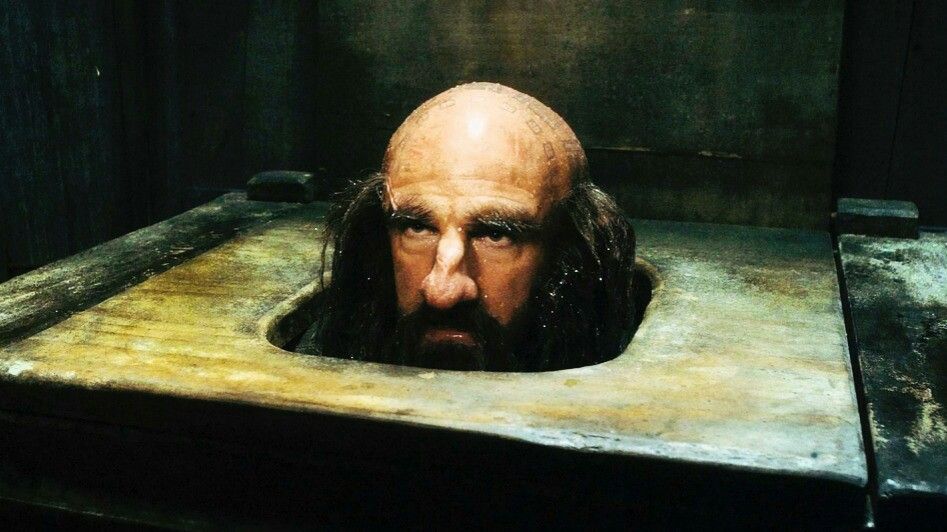
Professor Tolkien kept the toilets, orgasms, and such other bodily ephemera offstage the entire time. Invisible. Never even suggested. This is high fantasy, remember, and a special kind too. There’s one noticeable exception in The Hobbit: The Desolation of Smaug where Peter Jackson showed Bilbo and the Dwarves climbing into Bard’s house through the secret entrance of, yes, the toilet. Thus the word ‘toilet’ entered Middle-earth dialogue for the first time (Tolkien would have disapproved linguistically at the very least because it’s so damn French); but to some fans this silly, throwaway gag was a red flag that P.J. had *perhaps* missed some of the marks in his adaptation of The Hobbit (amongst other reasons, looking at you Tauriel/Kili/Legolas triangle) compared to the monumental achievement of his previous Trilogy.
Case in point: even the provocative director of the X-rated film Fritz the Cat, Ralph Bakshi, managed to keep it in his pants. His ambitious yet incomplete 1978 animated Lord of the Rings stays in the right lane, true to its high fantasy trope, even though the film is wildly psychedelic in its visual flair. Such a great contrast to his other fantasies Wizards and Fire & Ice which was R-rated “Adult Swim”-fare arriving decades early! Instinctively and thoughtfully, Bakshi knew that Tolkien’s story didn’t need all the Tits & Ass that had previously made the animator the darling of 70’s arthouse cinema. He kept that out of Middle-earth, indulging it elsewhere more suitably for his other films.
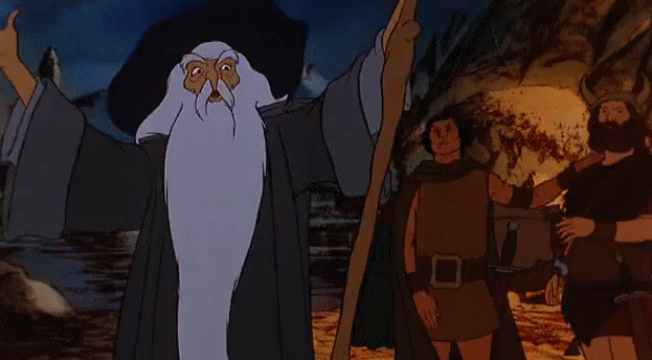
I recall my Dad taking me to the movies see John Boorman’s Excalibur when I was just 12. He knew my brother and I were really big on this sword and sorcery thing. Our love of Tolkien was so strong Dad figured the King Arthur legend would be ideal for us but he didn’t comprehend what was behind the “R” rating. I remember so clearly the opening scenes of Uther Pendragon’s sexual assault against Arthur’s mother, arranged by Merlin to conceive the future King. Shocked, my Dad leaned over to check on me—uncertain what to do: “You okay son? This might be too much for you…” I waved him off, “Yeah, I’m fine,” while my retinas were seared permanently with the first sexual act I had ever witnessed in my life. It was inscrutable and jarring to a child. Confusing. Dad wasn’t prepared to discuss the birds and bees and their biological needs, not by a mile. It didn’t overly-phase me, as my young mind was too busy trying to memorize The Charm of Making.
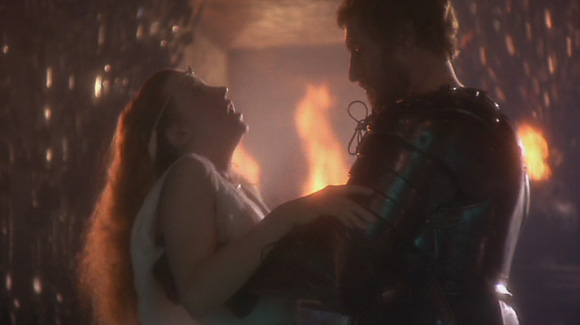
But it would strike me as very odd (and unnecessary) that a future predicament similar to my Father’s might befall parents innocently watching “a Tolkien fantasy show.” Imagine if suddenly you have to press pause, take the smallest children out of the room, and… “have the talk.” Well, you get it.
That was assuredly the moment for me where Tolkien differentiated himself from other fantasy storytellers. Indeed, that distinction was drawn in sharpest relief. Perhaps we are lucky that Mr. Boorman never got to direct LOTR for United Artists (that almost happened for real, but he made Excalibur instead).
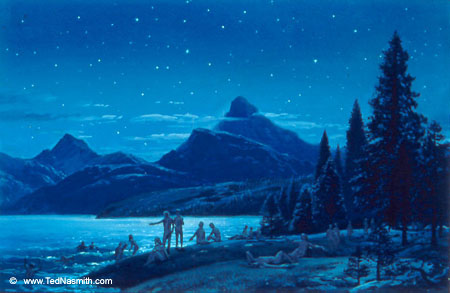
If you are unfamiliar or never read Tolkien and wanted to get into the fandom, would you want to start with the adaptation that stikes furthest away from Tolkien’s literary sensibilities? One which could be deemed too much for a child to watch?
Sure, there’s more than enough room for all the “adult content” of darkness and otherworldly terrors from Tolkien’s larger span of legends, there is DEFINITELY a place for that! I’m not arguing against any adaptation desirous of that. We can go as far away from the golden-hued fairy story of Bilbo’s journey that you want and go right to the 2nd Age of Sauron-inflicted deceits, treachery, and metaphysical corruption.
But why does it need to be prurient?
 The horrors brought upon Númenor end up with Satanic style Morgoth-worship and ghoulish human sacrifices. Body horror? Beheadings? Ripping living hearts from a sacrificial victim? Maybe. But there are no brothels mentioned. No Littlefinger. No orgies.
The horrors brought upon Númenor end up with Satanic style Morgoth-worship and ghoulish human sacrifices. Body horror? Beheadings? Ripping living hearts from a sacrificial victim? Maybe. But there are no brothels mentioned. No Littlefinger. No orgies.
The Hobbit and LOTR stand rather apart from the most insanely disturbing stuff within The Silmarillion (especially) and Unfinished Tales, so yes, it may yet be that someday we will have a separation of what Tolkien shows/movies you watch with your little ones… and those you just don’t. And now we realize the time may be upon us sooner than we think.
I’m just a guy who knows what he’s getting when he reads Tolkien. I know what I like: the languages, the world-building, the spirit of Arda. There’s a gazillion other styles and idioms of modern fantasy where you can get your fix of anything: be they puppets (The Dark Crystal: Age of Resistance) or video games (hey there Witcher).
Now The Witcher comes to mind as a counterpoint to Game of Thrones in terms of sexual portrayals. GoT portrayed so much of its sex negatively, tied to assault and dehumanizing acts (yeah, yeah there’s a wee bit of “romance” in the tub Jaime/Brienne) while in contrast The Witcher is extremely playful and wink-wink (hey, there’s a magic spell for your erectile dysfunction, how cute), and the orgy scene shows a woman completely in charge of its illusory energy. Not a victim at all compared to so many other depictions of female characters in fantasy. Yes, there’s room for all that sexy “insert tab A into slot B” in modern fantasy, as we have seen, but the end results can be widely divergent.
Y’all ready for this? As I said in the Star Wars example at the top of this piece, Amazon’s series might be an adaptation that forever alters how we see Arda.
What Exactly Do We Want From Amazon’s 2nd Age Series?
That’s the big kahuna. The ever-burning question. Observe what’s happening over there in Amazonland/Auckland. They hired a ton of very talented people but let’s focus on a couple of things:
- Esteemed Tolkien scholar and author Tom Shippey was only brought on board to help with the Map of Middle-earth that launched their Twitter feed a year ago. There has not been any marketing effort since then and he is confirmed to be no longer on the project. It seemed to be only lip-service to the fans, which does NOT work. That kind of subterfuge will NOT work, Amazon. We don’t know why his name still appears on the Cast and Crew Listing over on IMDb.
- John Howe is not currently in New Zealand and does not appear to be working on the production, certainly not in the fullness of his engagement as he was with Alan Lee back in the time of the New Line LOTR Trilogy. He may have provided some work for Amazon’s show but he’s seemingly not now.
- Then there’s that one dude that has caused a wee bit of nerves. Bryan Cogman is onboard as a Consulting Producer, after his commanding story work for Benioff and Weiss on HBO’s Game of Thrones. Quite capable and mega-geek-centric, Mr. Cogman however was a focal point of some controversy on that production. Ringers have been quite vocal that the kind of “rapey” Sansa Stark storylines (attributed to Mr. Cogman) would NEVER be the kind of thing they’d want to see in Middle-earth, no matter how gritty you want to get.
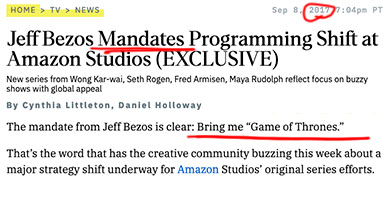
Grit and realism have their place. Darkness and light are explored in their extremes. No one is shying away from the more “adult” things Tolkien had in his stories or saying they don’t exist. The real question is to what extent are they going to “sexify” this show for the sake of getting their next Game of Thrones mega-hit? Just look at this from Variety where Jeff Bezos has mandated a programming shift to get what he wants: another GoT.
AMAZON: So you’re okay with accidental incest, human sacrifice, dismemberment, and sins against Eru?
RINGER FANS: Yes! That’s what Tolkien wrote!
AMAZON: But… you’re not okay with depicting sexualized characters having intercourse?
RINGER FANS: Exactly! That’s what Tolkien wrote!
AMAZON: ……
A predictable future tweet
My personal take: What fans want most from any Tolkien adaptation is verisimilitude. Something that carries the true spirit of Tolkien and has integrity in realizing it. Amazon’s showrunners can keep that integrity by staying true to the themes and characters and intent of the author. It is not impossible to guess Tolkien’s intentions when they are so plainly available to us, even though he is gone. #FidelitytoTolkien is a hashtag we have endeavored to use. Not perfect, but it’s a decent axiom to bear in mind.
Seeing anything remotely sexified between Galadriel and Annatar (oooh, a hot young shirtless Sauron in his seduction mode) or anything else like that is going to turn off fans so fast it will cause seismic waves through a very vocal fandom.
There won’t be any coming back from that. 1000’s of fans have replied and quote-tweeted this news with a variety of opinions for and against:
Does the Tolkien Estate Have “Veto Power” Over the Scripts?
Fact check: Unconfirmed! Well, we have been reporting that they do but it is unclear to what extent that power really exists. It is troubling. The Estate’s authority over the show’s content might not be sacrosanct; indeed it may be limited to keeping the structural frame of the narrative within the existing timelines we know are book-canon. They most likely don’t have final script approval (maybe there’s an infinitesimal chance they do); but it’s more like a general oversight to prevent fundamental alteration to the histories. We have a funny feeling that the two-episode combined pilot they are finishing up will be presented for the Estate’s approval. Time will tell.
But in my mind we’re better off tackling this as a fandom right now, and tell them what we want and don’t want from this Tolkien adaptation. They must listen.
Ringers—I ask you all: Do you want this LOTR to be just a Witcher meets Riverdale series with the branding of Middle-earth slapped on it? Why do I even say that? Because I’m afraid that’s what’s happening. Respected Tolkien twitter scholar The_Tolkienist shared an epic 30-tweet thread on the matter (with plenty of wink wink sarcasm).
Leave your comments on our message boards and social platforms: Twitter, FB, Instagram, knowing that Amazon Studios are definitely listening… and collecting data (!)… and calibrating their next efforts.
Much too hasty,
Clifford “Quickbeam” Broadway
Twitter: Quickbeam2000
Instagram: Quickbeam2000


